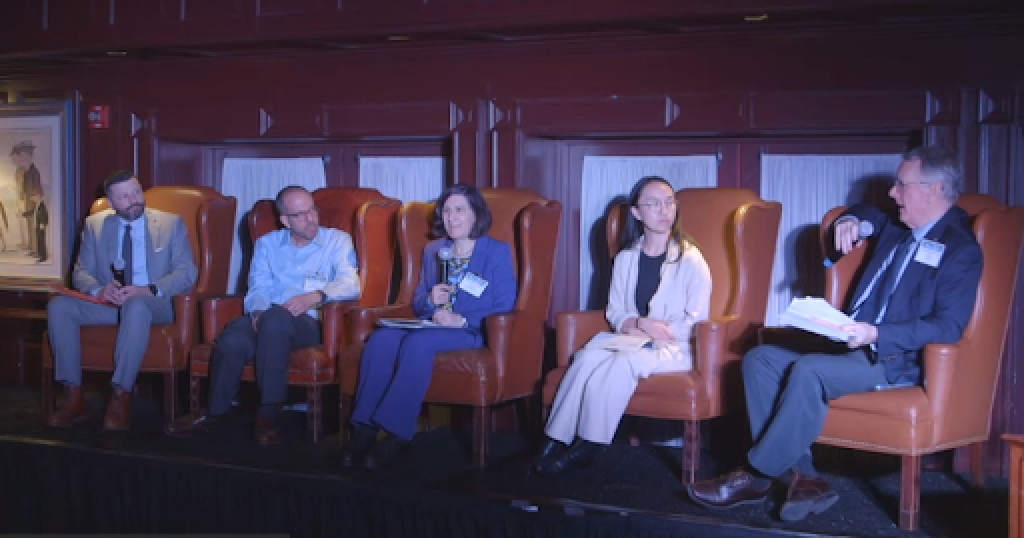Make Methodologies for Broadband Performance Publicly Available: Panelists
The labels are tools to assist consumers in easily accessing information regarding the price, speed, latency, and privacy.
Jericho Casper

WASHINGTON, March 8, 2024 – Further refinements to consumer broadband labels could enhance the clarity and accessibility of the information they aim to convey, said broadband data experts convened for a panel at the Broadband Measurement Summit on Thursday.
The focus of the discussion centered around enhancing the quality of data and improving the consumer experience within the Federal Communications Commission's consumer broadband labeling process.
These labels serve as tools to assist consumers in easily accessing information regarding the price, speed, latency, and privacy features of available internet service plan options. Internet service providers are actively working to meet deadlines for label requirements, including the creation of a glossary of terms and machine-readable data sets.
 Broadband BreakfastBroadband Breakfast
Broadband BreakfastBroadband Breakfast
Making it easy for consumers
Lorrie Faith Cranor, director and bosch distinguished professor of the CyLab Institute at Carnegie Mellon University, emphasized consumers' desire for internet service plans to be ranked using straightforward performance metrics that explicitly indicate whether the connection is suitable for everyday activities such as gaming, video conferencing, or web-browsing, aiding consumers in selecting the most suitable internet plan for their household.
Cranor also noted consumers' desire for a single comprehensive price point, including all fees and taxes, to be included on the label. Currently the labels do not have to specifically include taxes, which varies by location.
One of the CyLab Institute’s recommendations, which Cranor said she is happy to see the FCC adopt, called for presenting data in a comparable format in order to facilitate its use by third-party aggregators to compare metrics across different ISPs. CyLab proposed a machine-readable format such as JSON or XML for improved accessibility and utility.
The FCC has been collaborating with stakeholders on refining these labels, with ongoing efforts to enhance them.
Zac Champ, deputy chief of the consumer policy division at the FCC, highlighted the extensive considerations undertaken during the public comment period which will inform requirements for future iterations of labels.
“When we released the order we also asked other questions about how to define the data. We asked about the interactivity of labels. We asked about our categories, and other ways of defining speed.”
“As much as we have a template. I expect there's going to be variations and [the FCC] wants to know what data is helpful with comparison shopping to get accurate information out to consumers when they need it,” said Champ.
As indicated by feedback gathered through an extensive survey by the CyLab Security and Privacy Institute at Carnegie Mellon University, consumers express a strong desire to have more comprehensive information regarding the reliability of internet connections included within consumer broadband labels. This includes metrics regarding server downtime and duration.
The CyLab Institute developed its own unique format for consumer broadband labels based on its study examining broadband internet consumers' information needs, terminology comprehension, and format preferences.
Cranor highlighted the lack of FCC guidance regarding how ISPs should house all this new data, saying one possibility is the establishment of a registry, or alternatively, a company could choose to host them in a standardized location on their website. However, Cranor said, the current lack of guidance poses a challenge for third-party tools seeking to access and utilize this data effectively.
Methodologies need to be publicly available
Lai Yi Ohlsen, lead data scientist at Measurement Lab further emphasized the importance of making the methodologies used publicly-available, in order for findings to be meaningful and reproducible. Ohlsen called for the FCC to consider multiple additional metrics, including latency and packet loss, when evaluating internet quality.
During the discussion moderated by Ted Hearn, editor and publisher of Policyband, a question was raised about enforceability. Champ responded that the FCC will depend on consumer complaints and information sharing with the Federal Trade Commission to ensure the accuracy of speed labels, with a particular emphasis on continual improvement.
Champ emphasized the importance of accuracy and noted that it falls within the jurisdiction of the FCC's enforcement bureaus to address any violations. Additionally, providers must retain label records for a minimum of two years and provide them to consumers upon request for enforcement purposes.
Steve Morris, vice president and deputy general counsel at NCTA: The Internet & Television Association, said that his organization’s members have been diligently working to meet the FCC’s mandate for over a year.
He emphasized the enormity of the task, highlighting the complexity involved in ensuring that the labels are ready for release and accurately correspond to consumers' addresses and the associated fees.
Morris clarified that this undertaking is a significant endeavor for companies, given the specific format requirements and jurisdictional considerations.
He noted that while transparency requirements have been in place for some time, the process of implementing them in a standardized format and addressing jurisdictional nuances has presented unique challenges.
Providers must adhere to the FCC’s label generation deadline, set for April 10 for large providers and October 10 for smaller ISPs.









